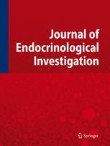
Medicine RSS-Feeds by Alexandros G. Sfakianakis,Anapafseos 5 Agios Nikolaos 72100 Crete Greece,00302841026182,00306932607174,alsfakia@gmail.com
Πληροφορίες
Πέμπτη 7 Μαΐου 2020
Association of left ventricular hypertrophy with the level of thyroid hormone in euthyroid state
Association of left ventricular hypertrophy with the level of thyroid hormone in euthyroid state:


Αναρτήθηκε από
Medicine by Alexandros G. Sfakianakis,Anapafseos 5 Agios Nikolaos 72100 Crete Greece,00302841026182,00306932607174,alsfakia@gmail.com,
στις
10:29 μ.μ.

Ετικέτες
00302841026182,
00306932607174,
alsfakia@gmail.com,
Anapafseos 5 Agios Nikolaos 72100 Crete Greece,
Medicine by Alexandros G. Sfakianakis,
Telephone consultation 11855 int 1193
Εγγραφή σε:
Σχόλια ανάρτησης (Atom)
Αρχειοθήκη ιστολογίου
-
►
2023
(366)
- ► Φεβρουαρίου (184)
- ► Ιανουαρίου (182)
-
►
2022
(2814)
- ► Δεκεμβρίου (182)
- ► Σεπτεμβρίου (213)
- ► Φεβρουαρίου (264)
- ► Ιανουαρίου (262)
-
►
2021
(3815)
- ► Δεκεμβρίου (229)
- ► Σεπτεμβρίου (276)
- ► Φεβρουαρίου (64)
-
▼
2020
(5754)
- ► Δεκεμβρίου (401)
- ► Σεπτεμβρίου (365)
-
▼
Μαΐου
(294)
-
▼
Μαΐ 07
(101)
- Reports of Practical Oncology & Radiotherapy,
- Water Management Program Implementation in Califor...
- Biomedicine & Pharmacotherapy,
- Medgadget,
- Journal of Human Evolution,
- Oral Biology,
- Cortex,
- JAMA Otolaryngology–Head & Neck Surgery Online...
- European Journal of Surgical Oncology (EJSO), ...
- Current Opinion in Neurobiology,
- Royal Society of Chemistry (Great Britain) Soc...
- ScienceDirect Publication: Journal of Proteom...
- Challenging Dogma in Arteriovenous Malformation Su...
- Giant Encephalocele in Sokoto, Nigeria: A 5-Year ...
- Spinal Intramedullary Epidermoid Cyst: Case Repor...
- S3 Sacral-Alar Iliac Screw: A Salvage Technique f...
- Spontaneous Extrusion of Ventriculopleural Shunt ...
- Awake Craniotomy in a Patient with Previously Dia...
- Capicua Transcriptional Repressor-Rearranged Undi...
- Ten-Segment Intramedullary Ependymoma and Whole S...
- Oculomotor Neurofibroma: A Different Histology Im...
- An Unusual Bump on the Head: Intracranial and Ext...
- Pituitary Adenoma and Papillary Craniopharyngioma...
- Congenital Glioblastoma Multiforme with Long-Term...
- Posterior Calvarial Augmentation for Chiari Malfor...
- The Journal of Prosthetic Dentistry,
- Behavioural Brain Research,
- Journal of Endocrinological Investigation,
- Association of left ventricular hypertrophy with t...
- HNO,
- Beyond Haeckel’s Law: Walter Garstang and the Evol...
- British Association of Plastic Surgeons,
- Clinical Imaging,
- Science: Current Issue,
- Otolaryngology Indian,
- JoVE: Journal of Visualized Experiments,
- Neurons in Subcortical Oculomotor Regions are Vuln...
- Annals of Internal Medicine Online First,
- Surgical Infections,
- Bioengineered recombinant vault nanoparticles coup...
- The MyotonPRO: a reliable and valid tool for quant...
- BioMed Research International,
- Does Sleeping Alone Lead to Self-Soothing Babies?
- Metabolic consequences of immune checkpoint inhibi...
- ScienceDirect Publication: Medical Hypotheses,...
- ScienceDirect Publication: Talanta,
- COVID-19, healthcare workers and future mental hea...
- The Role of the ThyroSeq v3 Molecular Test in the ...
- liebertpub1,
- Journal of Experimental & Clinical Cancer Res...
- Polymorphisms Within the RET Proto-Oncogene and Ri...
- A comparative analysis of genetic hearing loss phe...
- Plastic and Reconstructive Surgery - Publishe...
- Clinical Significance of the Preoperative Thyroide...
- Annals of Allergy, Asthma & Immunology,
- Radiotherapy and Oncology,
- Oncogenesis -
- Annals of Intensive Care - Latest Articles,
- BMC Evolutionary Biology - Latest Articles,
- Severe Acute Respiratory Syndrome Coronavirus 2: G...
- Popular Science,
- Journal of the American Chemical Society: Late...
- Latest Results for Psychopharmacology,
- Radiation Oncology - Latest Articles,
- Most Recent Articles: BMC Evolutionary Biolog...
- Analytical Chemistry,
- Evolutionary Biology News --
- Lyin' eyes: Butterfly, moth eyespots may look the ...
- Neuroradiology,
- Does multiparametric imaging with 18F-FDG-PET/MRI ...
- Cancer,
- Clinical Cancer Research Online First Article...
- Molecular Cancer Therapeutics Online First Ar...
- CHK1/2 Inhibitor Prexasertib Suppresses NOTCH Sign...
- Ophthalmic Plastic & Reconstructive Surgery -...
- Palpebral Pleomorphic Adenomas of the Lacrimal Gland
- Molecular Cancer Therapeutics Online First Art...
- Pathology & Oncology Research,
- Automated ASPECT scoring in acute ischemic stroke:...
- Anti-inflammatory Effect of Ozone Therapy in an Ex...
- A new lower limb portable exoskeleton for gait ass...
- The New England Journal of Medicine: Health Po...
- Latest Results for Abdominal Radiology,
- BMC Research Notes,
- Journal of Cancer Education,
- Surgical and Radiologic Anatomy,
- Evaluation of olfactory bulbus volume and olfactor...
- Stem Cells and Development,
- Latest Results for Maternal and Child Health ...
- bioRxiv Subject Collection: Evolutionary Biolo...
- Future Oncology,
- Endoscopic management of congenital nasal meningoe...
- Trapped fourth ventricle: a rare complication in c...
- Unusual presentation of brain abscess in a 23-mont...
- Cancer Biotherapy & Radiopharmaceuticals - Tab...
- Journal of Adolescent and Young Adult Oncology...
- World Journal of Emergency Surgery - Latest Ar...
- Rambam Maimonides Med J,
- Emapalumab in Children with Primary Hemophagocytic...
-
▼
Μαΐ 07
(101)
- ► Φεβρουαρίου (754)
- ► Ιανουαρίου (894)
-
►
2019
(146)
- ► Δεκεμβρίου (19)
- ► Σεπτεμβρίου (54)

Δεν υπάρχουν σχόλια:
Δημοσίευση σχολίου